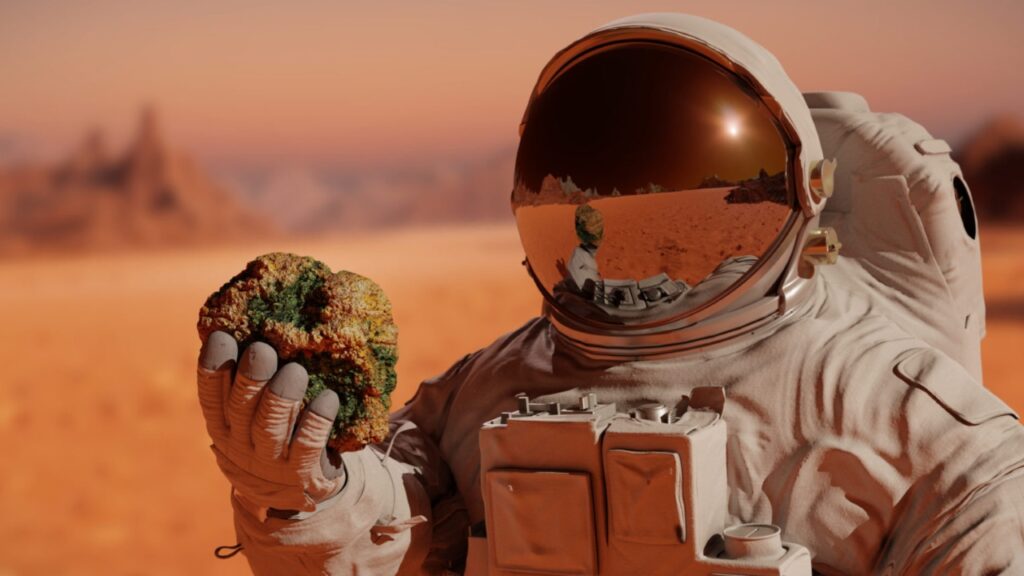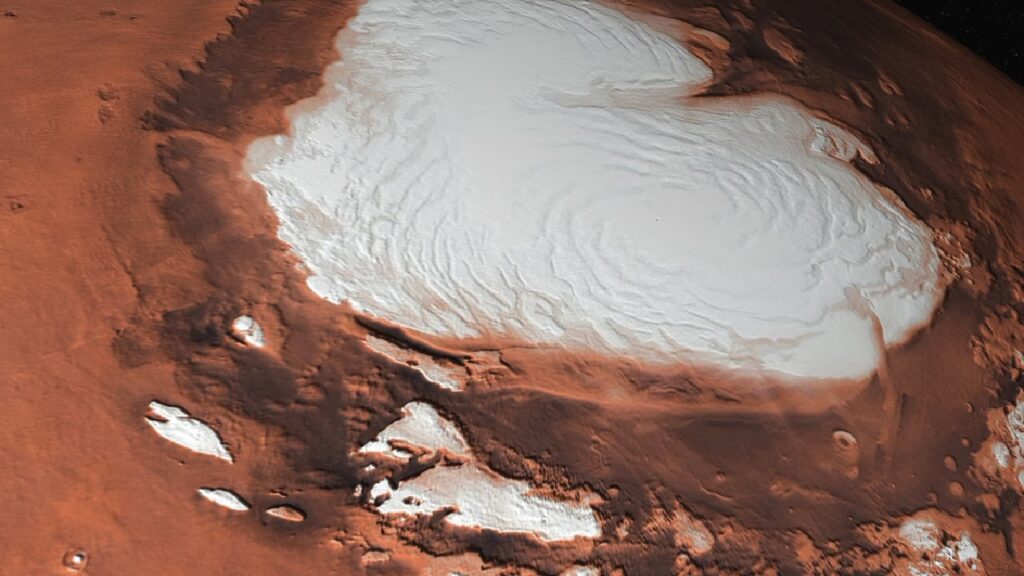
Mars has a history of liquid water on its surface, including the long-dried lakes that once occupied Jezero Crater. Ancient water carrying debris was thought to be the only thing that caused the formation of the troughs that spread across Mars. Now that dry ice has been proven to do the same, the question “Is there water on Mars?” is being asked again.
Is there water on Mars?
Previously, scientists believed that Mars only had troughs in the form of liquid water because that’s what happens on Earth. What was not taken into account was sublimation, the direct transition of a substance from solid to gaseous state. Sublimation explains how the CO2 ice disappeared.

Frozen carbon dioxide is everywhere on Mars, including its valleys. When CO2 ice sublimates in one of these troughs, the resulting gas can push debris further down the slope and continue to shape it.
A team of scientists led by planetary researcher Lonneke Roelofs from Utrecht University in the Netherlands found that sublimation of CO2 ice may have shaped the cavities on Mars. This discovery raises the question, “Is there still water on Mars?” I mean, there may have been before, but is there now?
This discovery could mean that the last occurrence of liquid water on Mars could be much older than previously thought. It could also mean that the window for life to emerge and flourish on Mars is probably smaller.
In a study recently published in the journal Communications Earth & Environment, Roelofs and colleagues said: “Sublimation of CO2 ice under Mars’ atmospheric conditions could fluidize the sediment and create morphologies similar to those observed on Mars.”
Are the causes of troughs on Earth and Mars different?
Troughs on Earth and Mars have basically the same morphology. The difference is that we know for sure that liquid water is behind their formation and their constant shaping and reshaping on Earth. Such activities include opening new channels and moving more debris to the bottom.
While there was enough stable liquid water on ancient Mars to accomplish this, there is not enough liquid on the current surface of Mars to sustain this kind of activity. This is where sublimation comes into play. CO2 ice has been observed on the Martian surface at the same time as the material starts to flow.

Since this experiment shows that gutters and similar systems can be shaped not only by liquid water but also by sublimation, it raises questions about how long Mars has a sufficient supply of liquid water for any organism (if any) to survive on its surface.
The period of habitability may be shorter than once thought. Does this mean that nothing lives on Mars? Not necessarily, but Roelofs’ and his team’s findings could affect how we look at the planet’s habitability in the future.






